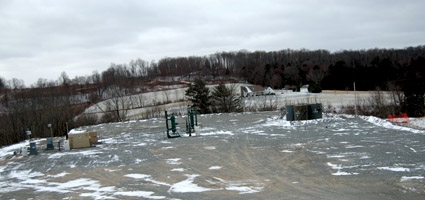Boon or Bust Part IV: Is natural gas development the solution to ag industry's woes?
SUSQUEHANNA COUNTY, Pa. – If you want to see John Benscoter smile, ask him about the royalty checks he receives from Chesapeake Energy.
The Auburn farmer leased the natural gas rights on the 105-acre farm which has been in his family since 1837 to the multi-national energy company in the spring of 2006 for the paltry sum of $47 an acre.
“We’d never heard of Marcellus (Shale),” he said. “We had no idea.”
Chesapeake has yet to drill on his property, but that doesn’t mean Benscoter’s not benefiting from the Northern Tier’s natural gas boom. The farm – a working beef cattle operation – is part of not one, but two spacing units from active wells on adjacent properties.
“We received our first check in late June,” Benscoter reported, breaking into a grin which widens as he explains the checks grew larger in November, when the second well started producing.
This new-found wealth doesn’t mean Benscoter is planning to quit his day job. (Either of them, since he also works for the Susquehanna County Soil Conservation District.) Nor does he expect other agricultural producers to do so.
“Nobody is going to quit farming,” he said. In fact, he says it has allowed him to invest in new equipment and modernize his operation. According to him, his neighbors are doing the same.
“Once you start getting royalties, the weight is off your shoulders.”







Comments